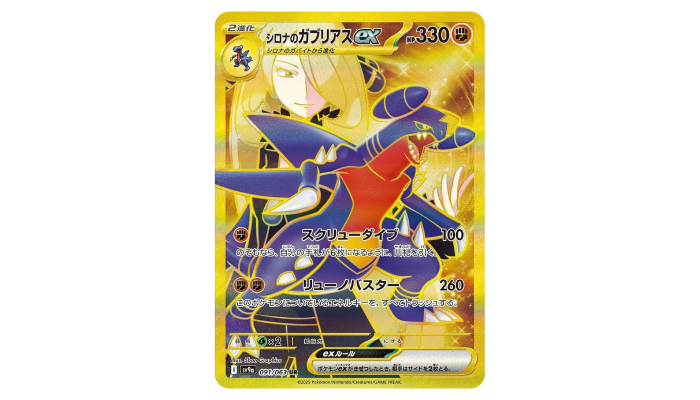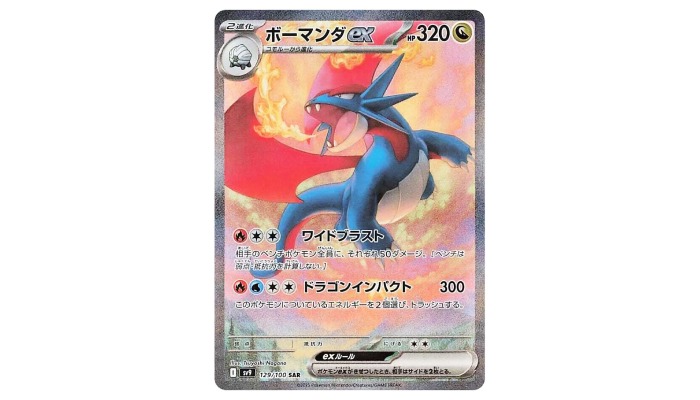
In 2025, determining the best legendary Pokémon generation comes down to a mix of competitive strength, collector interest, and overall impact in the TCG world. Generation 2 (Johto) stands out mostly thanks to Lugia VSTAR, which is powerful in tournaments and offers great combo potential. Gen 4’s Arceus VSTAR also stays relevant for its versatility, while Gen 1 legendaries like Mewtwo EX and Charizard ex hold strong collector value and occasional competitive use. Though newer generations bring fresh options and cool art styles, they haven’t yet matched the legacy or investment appeal of older cards. Overall, Gen 2 balances power and rarity well this year.
Evaluating the Best Legendary Pokémon Generation in 2025
Choosing the best legendary pokemon cards generation in 2025 requires looking at how these cards perform in tournaments, their value to collectors, and their overall influence in the Pokémon TCG community. The meta changes often, so cards that stay strong competitively tend to keep their value high. Generation 2 stands out because its legendaries like Lugia VSTAR combine raw power with strategic flexibility, making them top picks in high-level play. Collector interest is also high due to nostalgia and the consistent tournament relevance of these cards. Generation 4 follows closely with legendaries like Arceus VSTAR, whose versatile abilities help it remain useful in many decks while still attracting collectors. Generation 1 legendaries hold an iconic place in the community; cards like Mewtwo EX and newer printings of Charizard still command respect both on and off the battlefield thanks to their timeless appeal and scarcity. Generation 3’s legendaries, such as Dragapult EX, offer competitive options and sealed products that are growing in value, though they don’t dominate as much as Gen 2 or 4. While newer generations are adding fresh cards and cool artwork, they haven’t yet reached the same level of competitive dominance or collector demand. Overall, Generation 2’s balance of competitive strength, rarity, and fan excitement makes it the leading choice for the best legendary Pokémon generation in 2025.

Generation 2 (Johto): Power and Meta Dominance
Generation 2 legendaries have carved out a strong position in the 2025 Pokémon TCG meta, largely thanks to Lugia VSTAR. With an impressive 280 HP and powerful attacks, Lugia VSTAR is not just bulky but also highly versatile. Its VSTAR power lets players put two Normal-type Pokémon from the discard pile directly onto the bench, ignoring evolution rules. This ability creates unique combo opportunities that many decks rely on for consistency and applying pressure during matches. The combination of high HP and this strategic recovery effect makes Lugia VSTAR a staple in competitive play.
While Neo Slowking from the same generation is banned, its legacy still influences how players view Gen 2’s strength. Other Gen 2 legendaries like Ho-oh and Suicune appear occasionally, typically filling supportive roles rather than leading decks. One reason Gen 2 cards remain relevant is their well-balanced mix of attack power and useful effects, which often work well with cards that accelerate energy or manipulate the discard pile. This synergy keeps them competitive and desirable.
Generation 4 (Sinnoh): Versatility and Competitive Strength
Generation 4 legendaries, especially Arceus VSTAR, continue to hold a strong position in the 2025 Pokémon TCG meta thanks to their flexibility and balanced design. Arceus VSTAR’s VSTAR power lets players search for any two cards from their deck, making it incredibly versatile for setting up combos, healing, or grabbing key resources quickly. This ability, combined with its solid HP and reliable attack options, makes Arceus both tough to take down and a consistent threat in battle. Giratina VSTAR also remains relevant, often used for its powerful attacks and synergy with disruption strategies that can unsettle opponents’ setups. While Shaymin EX was once a staple for fast draw and accelerating game pace, its ban in expanded formats limits some of the generation’s potential, though it doesn’t overshadow the strength of other Sinnoh legendaries. From a collector’s standpoint, sealed Diamond & Pearl products are increasingly valuable due to their scarcity, fueling steady interest in Gen 4 cards overall. Sinnoh’s legendary cards fit well into many deck archetypes, whether as attackers or support, which contributes to their ongoing presence in competitive play and their appeal to collectors. This generation is often praised for the strategic depth it offers, balancing power with tactical options, making it a solid choice for players and investors alike.
Generation 1 (Kanto): Iconic Status and Collector Value
Generation 1 legendary cards hold a special place in the Pokémon TCG world, largely due to their iconic status and strong collector appeal. Mewtwo EX continues to be a symbol of Gen 1 power, still seeing occasional play in competitive settings, while newer prints like Charizard ex from the Scarlet & Violet era add fresh value with energy acceleration abilities that boost damage output. However, much of the demand for Gen 1 cards is driven by nostalgia and the historical significance of originals like the 1st Edition Shadowless Charizard, which remains one of the most sought-after and valuable collector cards ever printed. These cards often fetch premium prices in mint condition, especially when graded, with rarity and iconic imagery being the main draws rather than current meta dominance. Japanese promos and limited runs of Kanto legendaries add another layer of appeal for collectors chasing scarce, high-quality prints. Mewtwo and Charizard have maintained cultural status and community admiration for decades, making them staples in many fan collections and investment portfolios. While not always the most dominant in today’s meta, the generation strikes a balance between historic importance and select competitive relevance, securing its place as a cornerstone of both collecting and playing in 2025.
Generation 3 (Hoenn): Competitive Picks and Investment Potential
Generation 3’s Hoenn legendaries hold a unique spot in 2025, balancing competitive relevance with collector appeal. Dragapult ex stands out as the key competitive pick from this era, still favored for its efficient, low-cost attacks and ability to spread damage across the opponent’s bench. This makes it a versatile choice in aggressive decks, especially those that lean on discard strategies, which Hoenn cards often support well. While fan-favorite legendaries like Rayquaza continue to enjoy strong community affection, their presence in top-tier tournaments has waned compared to newer or more dominant legendaries from other generations. On the investment side, sealed booster boxes from the EX and Diamond & Pearl periods, which include many Gen 3 cards, are becoming increasingly rare. This scarcity is driving up their value, making unopened products a smart consideration for collectors and investors. Alternate art cards and promos from Hoenn also command respectable prices, offering a blend of nostalgia and modern appeal. Although Gen 3 legendaries tend to be flexible and fit various deck styles, they don’t quite match the dominance seen in Gen 2 or Gen 4 competitive legends. Still, as the generation ages and sealed stock diminishes, collector interest grows steadily. Overall, Hoenn cards provide a solid middle ground, appealing to both players looking for competitive options and collectors seeking value in a generation that combines aggressive playstyles with an increasingly scarce market.
Collector Market Trends for Legendary Cards Across Generations
In 2025, collector interest in legendary Pokémon cards tends to focus heavily on both nostalgia and rarity, which clearly favors Generations 1 and 2. Classic cards like the 1st Edition Shadowless Charizard can fetch prices in the millions when graded in top condition, making them the crown jewels of the market. Meanwhile, sealed booster boxes from Generations 3 and 4 are becoming increasingly scarce, attracting investors looking for long-term value beyond individual cards. Although modern sets like Scarlet & Violet introduce stunning alternate art legendaries that are gaining traction, their values remain well below those of vintage cards. Japanese promos and limited print runs are also rising in appeal due to their better print quality and scarcity, offering collectors unique options that blend rarity with aesthetic quality. Cards that remain relevant in tournament play, such as Lugia VSTAR or Arceus VSTAR, experience price spikes since they attract both competitive players and collectors who want meta-relevant pieces.
Fan Favorites and Community Opinions on Legendary Pokémon
Among fans and players, certain legendary Pokémon consistently stand out as favorites. Lugia from Generation 2, Rayquaza from Generation 3, Arceus and the Sinnoh trio from Generation 4, and Mewtwo from Generation 1 frequently dominate conversations due to their memorable designs, strong lore, and lasting impact in the Pokémon TCG. While newer legendaries like Koraidon and Miraidon from Generation 9 are gaining attention, they haven’t yet developed the deep legacy or widespread affection that older generations enjoy. Nostalgia plays a significant role, especially for Generation 1 and 2 legendaries, where many players’ first experiences with Pokémon began. Competitive relevance also shapes fan interest; legendary cards that perform well in tournaments tend to see spikes in popularity, as players admire both their power and strategic potential. Community discussions often revolve around a balance of power, card design, and backstory, with fan art and social media buzz frequently highlighting classic and meta-relevant legendaries. Collectors and competitive players often overlap in their appreciation, particularly for cards that feature unique alternate art or innovative mechanics. This shared enthusiasm influences secondary market prices and even deck choices in tournaments, showing how fan sentiment directly affects the broader scene. Overall, the favorites reflect a mix of nostalgia, competitive success, and visual appeal, confirming that legendary Pokémon’s popularity extends beyond just gameplay into the heart of the community.
Recent Generations and Their Growing Presence in TCG
Generations 8 and 9 have brought fresh energy to the Pokémon TCG with modern competitive cards that introduce new mechanics and striking alternate art styles. Cards like Miraidon ex and Gardevoir ex are quickly becoming popular among newer players and collectors, thanks to their blend of playability and visual appeal. While these newer generations have yet to match the vintage status or collector prices of earlier eras, they stand out for design innovation and efforts to diversify the meta. Promos and alternate art variants are especially attracting collectors who value aesthetics alongside gameplay. The competitive success of recent legendary cards tends to fluctuate as the meta evolves and formats rotate, but their strategic depth continues to grow with each new mechanic introduced. Sealed products from these generations are still widely available, which keeps prices moderate for now, but they are expected to increase in value as time passes. Community interest in these newer generations steadily rises with every major set release and tournament season, indicating a building foundation for their future significance. Overall, while recent generations don’t yet hold the collector hierarchy or enduring power of older ones, they are carving out an important space in the TCG landscape with their blend of innovation, style, and emerging competitive strength.